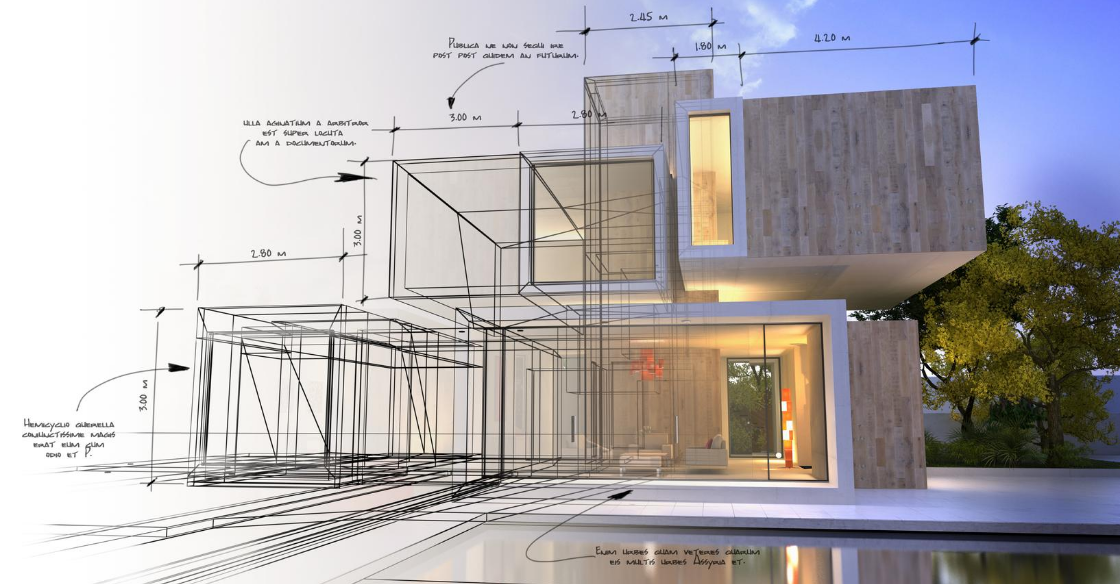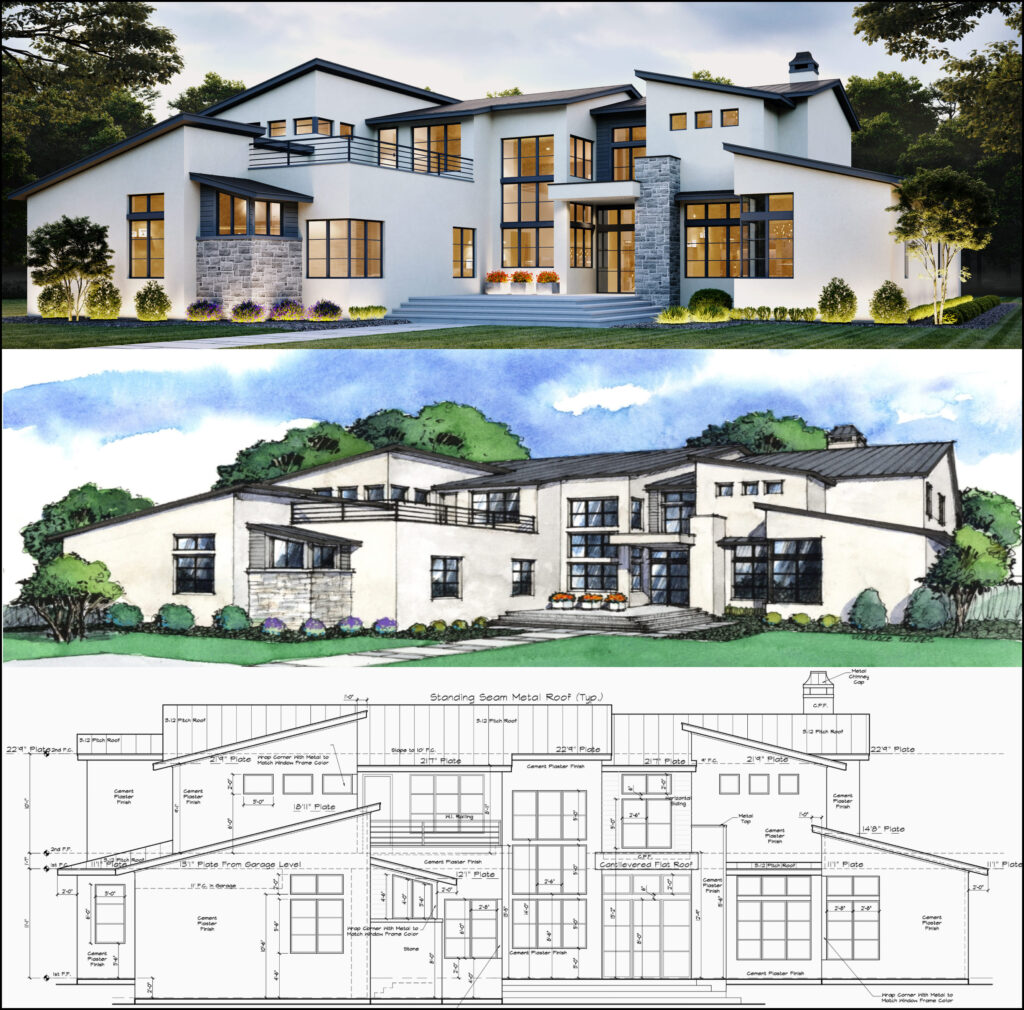Recognizing the Collaborative Refine In Between Designers and Engineers in Modern Construction Projects
The collective process between engineers and engineers is essential in modern-day building jobs, as it harmonizes layout intent with design feasibility. Discovering these dynamics reveals understandings that could substantially impact job outcomes and general industry criteria.
The Significance of Partnership
The collaborative harmony in between architects and designers is vital for the effective realization of any kind of building project. This collaboration unites distinct knowledge and perspectives, allowing the assimilation of innovative style with sensible engineering options. By functioning with each other, architects and engineers can make certain that a project not only satisfies visual and functional requirements yet also sticks to safety, sustainability, and monetary constraints.
Collaboration fosters a shared vision, assisting in the placement of objectives and assumptions from the beginning. This alignment is important in attending to prospective difficulties and mitigating dangers that can emerge throughout the job lifecycle. A collective strategy enables for the effective allotment of resources, optimizing both time and cost.
The relevance of partnership includes the repetitive process of style and construction, where responses from engineers can inform building decisions, bring about more feasible and lasting designs. Alternatively, designers can motivate engineers to assume creatively regarding just how to accomplish architectural integrity without jeopardizing artistic intent. Eventually, the joint relationship between engineers and engineers is not simply valuable; it is essential to the production of top quality, practical, and cutting-edge built atmospheres that satisfy the demands of society.
Communication Methods and Devices
Reliable communication techniques and devices are essential for fostering partnership between engineers and engineers throughout the job lifecycle. Developing clear networks of interaction is necessary to guarantee that all group participants are straightened with task objectives, timelines, and obligations. Normal conferences, both in-person and virtual, supply possibilities for stakeholders to review development, address worries, and make notified decisions.

Furthermore, embracing collaborative communication tools, such as Slack or Microsoft Teams, enables immediate messaging, file sharing, and recurring conversations, advertising a more dexterous feedback to emerging concerns. Paper administration systems also play an essential duty in organizing job documentation, ensuring that all group members have accessibility to the newest details.
Shared Goals and Task Vision
A merged project vision acts as the foundation for successful cooperation in between architects and designers (cda architects). This common vision not only lines up the initiatives of both parties however likewise develops a common framework for decision-making throughout the task's lifecycle. By verbalizing clear objectives, stakeholders can successfully browse the complexities of modern construction projects, making sure that both visual and functional requirements are satisfied
Establishing common objectives includes open discussion and an extensive understanding of each self-control's payments. Designers normally concentrate on layout intent, spatial partnerships, and customer experience, while designers stress architectural integrity, systems capability, and compliance with guidelines. When these viewpoints are straightened, the result is a cohesive task that adheres to both imaginative goals and technological expediency.
Furthermore, a well-defined project vision cultivates liability amongst employee, my response encouraging each individual to take possession of their function in accomplishing the desired outcome. Regular check-ins and joint workshops can better strengthen this commitment, enabling modifications to be made as the job progresses. Ultimately, a shared vision not only boosts teamwork yet also boosts the quality of the last deliverable, bring about effective job conclusion.
The Role of Technology
Leveraging innovation has actually come to be important in boosting cooperation between architects and engineers. Structure Details Modeling (BIM) stands out as a crucial technology, allowing both architects and engineers to produce in-depth 3D versions that envelop layout intent and architectural honesty.
Moreover, cloud-based systems allow seamless collaboration, permitting task stakeholders to gain access to and update job data from anywhere. This cultivates a culture of transparency and liability, as modifications can be tracked and evaluated in real-time. Additionally, mobile applications further boost interaction, offering on-site teams with instant access to task specs and updates.
Arising innovations such as synthetic knowledge and artificial intelligence are additionally starting to contribute in predictive analysis, aiding groups identify potential issues prior to they arise. Inevitably, the duty of innovation in architecture-engineering cooperation not only boosts workflow efficiencies however also boosts advancement, bring about more effective job outcomes. By welcoming these technological innovations, designers and engineers can ensure a much more cohesive and productive joint process throughout the building and construction lifecycle.
Instance Studies in Effective Collaborations
Numerous study show the profound effect of effective collaborations between engineers and engineers on task results. One notable example is the partnership on the High Line in New York City, where landscape engineers, engineers, and metropolitan coordinators collaborated to transform a deserted rail line right into a dynamic public park. This multidisciplinary strategy not only improved the aesthetic quality however likewise guaranteed structural security and ecological sustainability.

The Burj Khalifa in Dubai even more shows the significance of collective initiatives - cda architects. The integration of design and design know-how enabled the job group to attain unprecedented heights while sticking to safety site link and security regulations and aesthetic vision
These instances emphasize the importance of communication, depend on, and shared purposes. In today's complex about his building atmosphere, such collaborations are necessary to browsing difficulties and supplying tasks that meet both functional and visionary goals.
Final Thought
In verdict, the cooperation in between designers and engineers is essential for the success of modern-day building and construction jobs. Efficient communication strategies, a shared project vision, and the integration of advanced technologies are essential parts that promote this partnership.